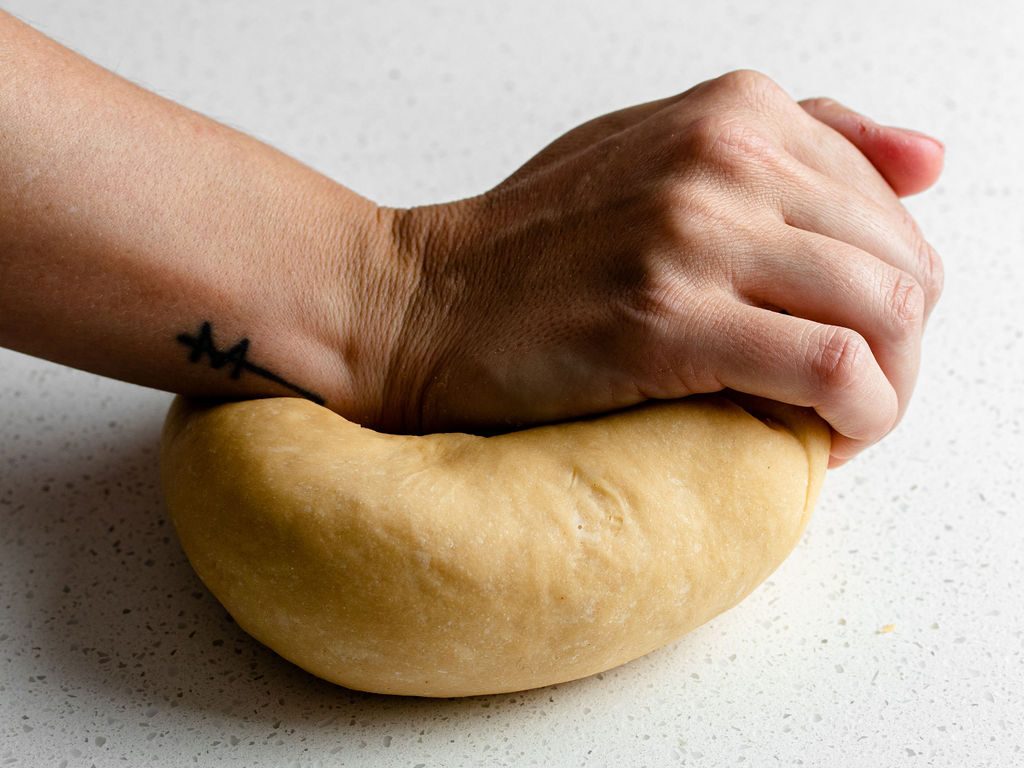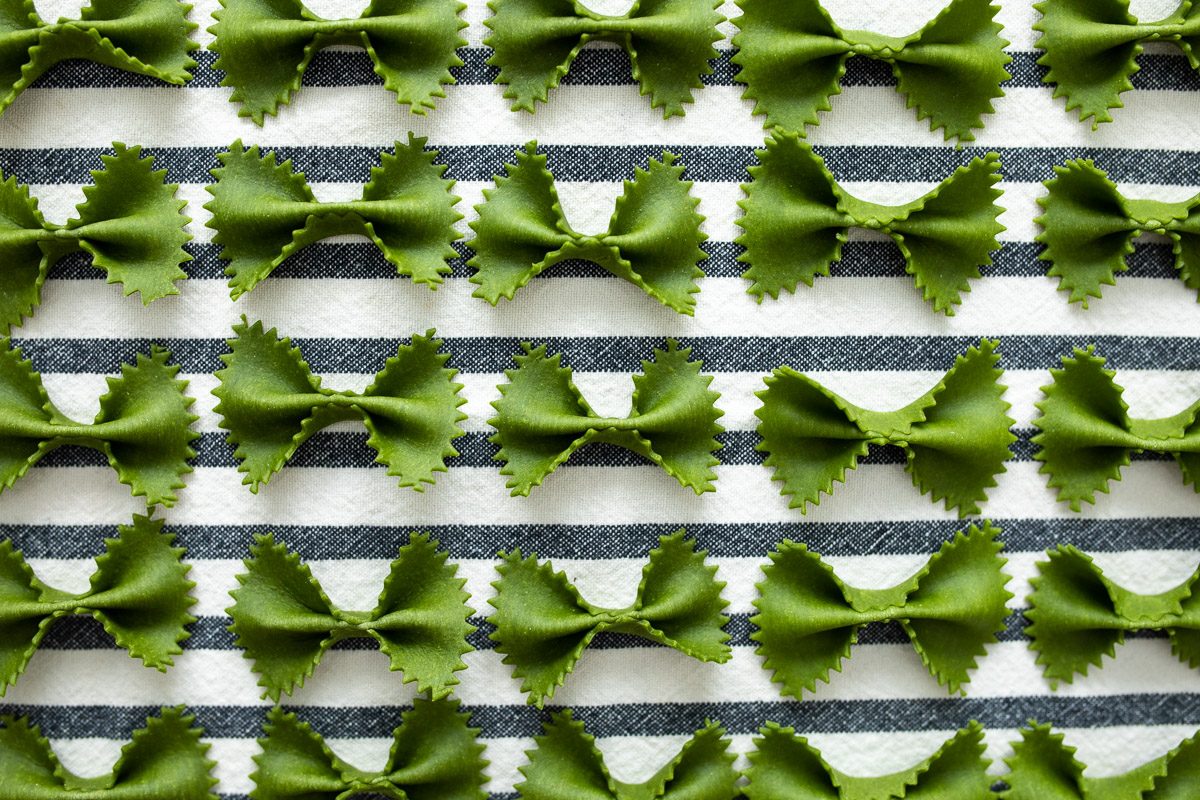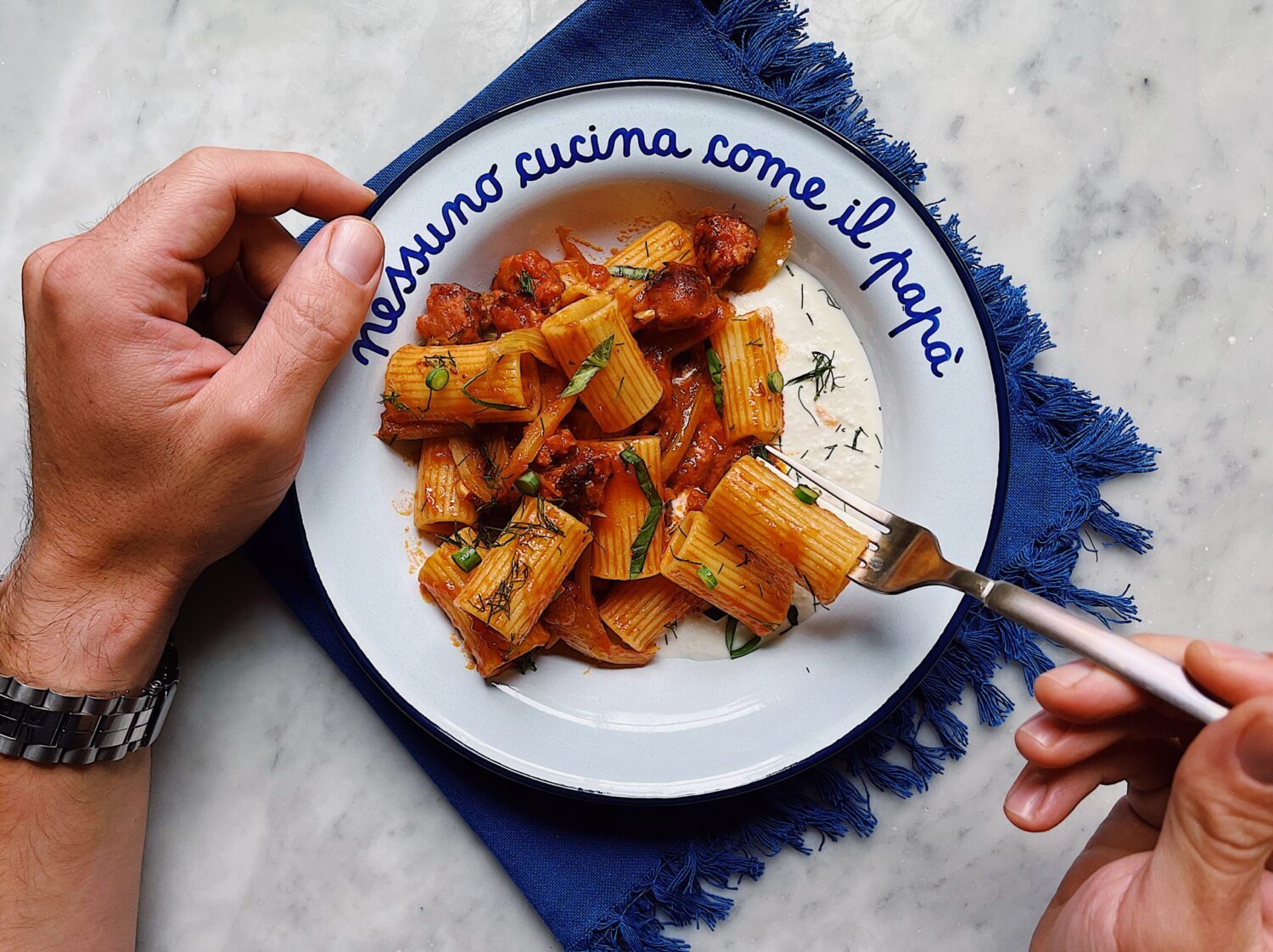
Basic Pasta Dough, Two Ways
In the world of fresh pasta, most shapes come from two basic doughs: fresh egg pasta dough – a mixture of 00 flour and eggs – and semolina pasta dough – a mixture of semolina flour and water. Naturally, there are some outliers, such as corzetti (which calls for a splash of white wine), pici (a mixture of 00 flour and water), gnocchi (typically potatoes, eggs, and 00 flour), and colored pasta doughs, like beetroot or spinach pasta. Still, the majority of pasta shapes all start with one of these basic pasta doughs.
Fresh Egg Pasta Dough
Fresh egg pasta is more commonly used throughout northern Italy, where historically speaking, wealthier populations resided and therefore could afford to purchase precious eggs. Common fresh egg pasta shapes include tagliatelle, pappardelle, stuffed pasta (like tortellini, agnolotti, and anolini), farfalle, lasagne, and garganelli. This type of dough produces a tender, delicate, and silky pasta that’s rich in flavor and color, thanks to the eggs. Although there are some exceptions to this rule, it’s more common to see fresh egg pasta served with butter-based sauces and less common to see it alongside heavy tomato and garlic-based sauces.
Semolina Pasta Dough
On the other hand, semolina pasta is more popular throughout southern Italy where eggs weren’t as readily as available and the grano duro, or durum wheat used for making semolina flour, used to grow. Semolina pasta dough is used to make many hand-formed shapes like orecchiette, cavatelli, busiate, and malloreddus. Semolina dough and the resulting pasta shapes tend to be more toothsome and structured, thanks to the toughness of the semolina flour.
Basic Pasta Making Tools
You don’t need much to make a basic pasta dough, although there are a few essentials that make things easier and result in a superior dough. No matter what kind of dough you are making, a clean wooden surface, such as tagliere, or pasta board, that hooks over your countertop or table are ideal. For fresh egg pasta, it’s also helpful to have a hand-cranked pasta machine or a long Italian-style rolling pin for rolling out your dough. A metal bench scraper comes in handy for cleaning up your wooden work surface and mixing up your dough, while a pasta wheel is helpful for cutting your dough into strips or adding decorative edges. Lastly, every pasta maker should have a ridged gnocchi board on hand which can add texture and grooves to many different types of pasta. Check out our basic pasta-making tools guide for more details.
Pasta Flour
There are two basic types of flour used to make almost all pasta doughs: type ’00’ flour and semolina flour. Type 00 flour is a finely ground soft wheat flour while semolina is a finely ground durum wheat flour. Check out our guide to Italian flour for a more in-depth explanation of the differences between these two types of flour.
It’s also possible to add in small amounts of other types of flour, such as spelt flour, buckwheat flour, chestnut flour, and grano arso flour to add a different flavor and texture to your pasta. Just note that using other kinds of flour may throw off your liquid-to-dry ingredient ratio since different flours have different protein and gluten levels and therefore may need more or less liquid ingredients. When using these flours, it’s best to replace only a small amount of the 00 or semolina flour in the recipe so that you can maintain the proper the gluten structure needed to make the dough. For example, in this busiate recipe, 50 grams of spelt flour is combined with 350 grams of 00 flour.
Pasta Dough Variations
While the basic doughs will provide a foundation for many different types of pasta, it’s important to note that there are variations and you can adjust the recipe depending on the shape you are making. For example, for an extra-rich egg pasta dough, you can choose to use only egg yolks and none of the whites. This type of dough will require many more egg yolks, though, since egg yolks aren’t as hydrating as egg whites. An all-egg-yolk dough is great for shapes like tagliatelle or tajarin, but probably wouldn’t be the best for something like tortellini or garganelli where a lot of bending and folding is required. These types of shapes need more hydration in order to make the dough more flexible, and so some egg whites are needed.
For our basic fresh egg pasta dough, we use a combination of 00 flour, semolina flour, and whole eggs. The semolina flour adds a bit more structure to the dough, which is helpful for shapes like garganelli or farfalle where you want the pasta to “stand up.” You could replace the semolina flour with equal parts 00 flour for a more tender and soft dough, which could be good for something like tagliatelle.
Colored and flavored pasta doughs are also options, often made by mixing in pureed vegetables, spices, or infusions into the dough.
Basic Pasta Dough, Two Ways
1 ball of dough, serves 3-4
Prep time: 30 Minutes, plus 30 minutes resting
Cook time: 0 Minute
Special Equipment
Kitchen scale
Wooden pasta board or surface
Bench scraper
Ingredients
For fresh egg pasta dough:
350 grams 00 flour
50 grams semola flour (optional; can replace with 00 flour for a more tender tough)
228 grams eggs, at room temperature
For flour-and-water pasta dough:
350 grams semola flour
175 grams lukewarm water
Method
Weigh. Use a kitchen scale to weigh out your ingredients in separate bowls.
Mix. Dump the flour into a bowl or onto a clean wooden board. Make a well in the center of the flour and add your wet ingredients (eggs or water). Use a fork or your fingers to gradually incorporate the flour from the sides of the well into the liquid. Mix until a thick, custard-like batter forms in the middle.
Knead. Using your hands or a bench scraper, fold in any remaining flour and begin to knead the dough. Stretch it forward with the heel of your hand, then fold it in half and press down. Roll the dough forward and backward a few times, then rotate it 90 degrees. Repeat the stretching, folding, and rolling motion for about 10 minutes, until the dough is smooth and homogenous in color.
Rest. Shape the dough into a ball (it’s okay if there are a few creases!) and cover with plastic wrap or a bowl. Let rest for at least 30 minutes before shaping.
Troubleshooting your pasta dough:
If you notice while kneading the dough is too dry, rub a little water on your hands and continue kneading until it comes together. If the dough seems too wet, sprinkle it lightly with a little flour and knead until it is no longer sticky.
Post a Comment
You must be logged in to post a comment.




